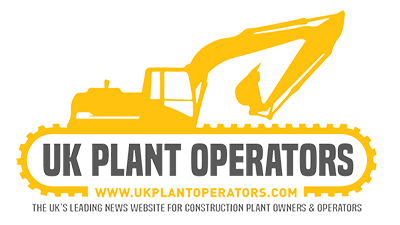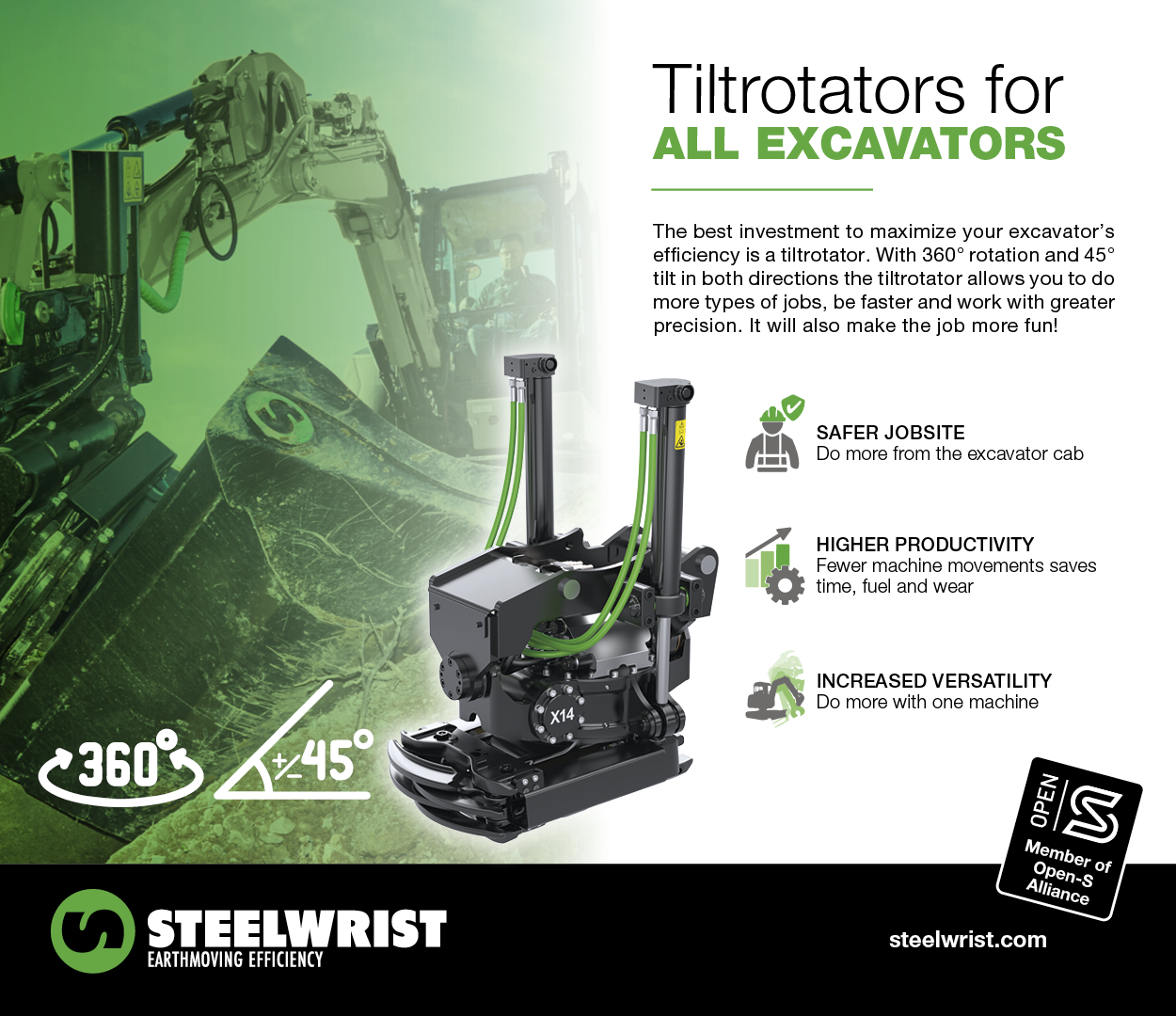![]()
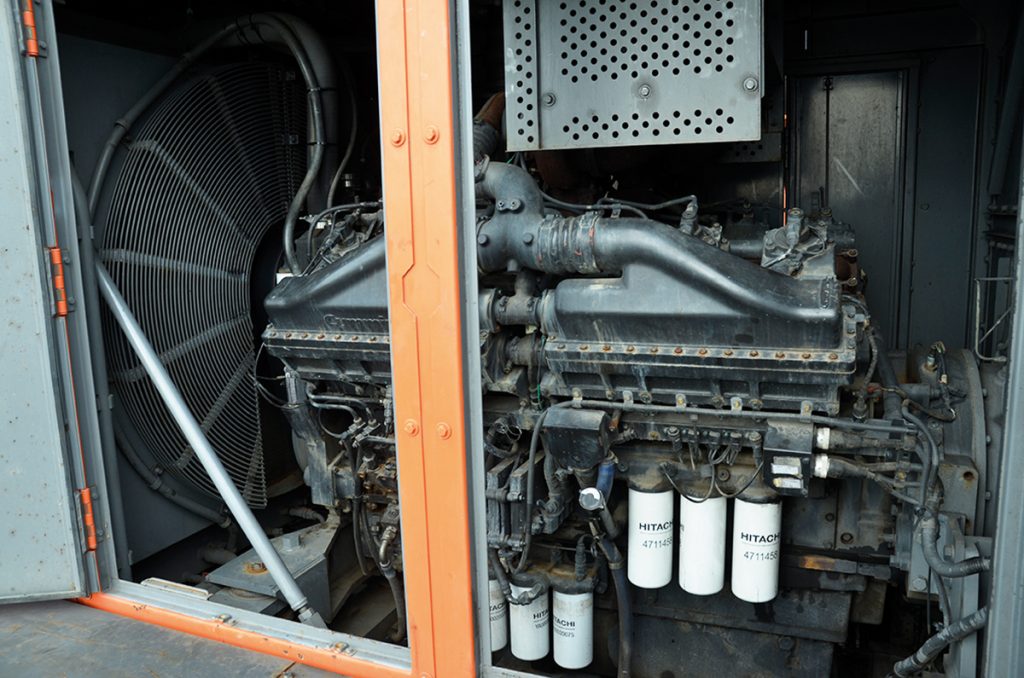
Grizzly Hitachi EX1200
Given the size and power of the re-worked EX1900 it is all too easy to overlook its ‘smaller’ Grizzly 2.0 sister, standing on top of the material still to be excavated not far from the EX1900’s pontoon.
The name is easily explained. This latest 170-tonne version of the EX1200-based Grizzly lifts 14 tonnes at a distance of 27m from the centre of the slew ring.
Carrying the same 4.0cu.m. MST-made bucket, the EX1200, a machine from 2017, digs material down to -6.0m, tipping out of the contents on the dry ground behind it for another long-reach excavator transfers it to a third excavator loading a barge.
As soon as the modification work was finished, the EX1200 was delivered to Aertssen early 2018 for a demolition job at a redundant Ford car factory.
At this stage, it is worth pointing out that some 500 of Aertssen’s 2,000-strong mobile machine fleet is located in the Middle East, at a company called EMW (Earthmoving Worldwide).
This is where all of the company’s larger Hitachi long-reach excavators, which includes numerous ZX870s, 19 x EX1200s and the second EX1900, are based.
Size matters in international earthworks circles, especially for projects at the water’s edge. Large international port projects require increasingly heavy blocks and rock armour to be placed further way from a land-based excavator or to dig to deeper depths requiring ever-longer reaching booms and sticks.
Aertssen, one of a handful of specialists in this area, has acquired the tools to do this. Nine of its EX1200s are fitted with 15.0m booms and 12.3m sticks (29.0m reach), and this excavator was the starting point for the latest reincarnation of the 112-tonne EX1200.
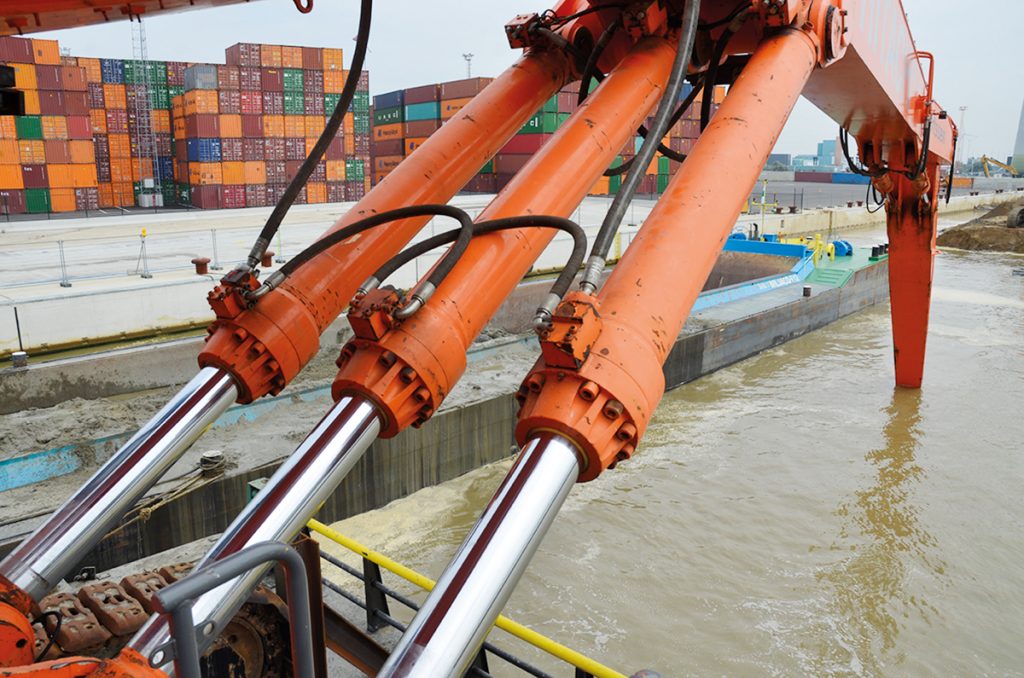
The engine is the standard six-pot 760hp Cummins QSK23-C, and it continues to use its standard hydraulic pumps. From then on there are lots of changes, the modifications following a similar blueprint to those of the EX1900.
The H-frame was rotated by 90 degrees and bolted to the top of a pair of newly-fabricated lengthening beams, which rest on the track frames. These modifications increased the outer track width from 4.8m to 7.4m. Stretched by 1.7m, the tracks have a length of over 8.0m.
There are several configurations, but the triple articulated boom (TAB) we saw comprises an 8.3m boom (12.0t), 9.0m auxiliary boom (10.0t) and one 8.0m (8.0t) stick (there is also a 12.4m/9.5t stick). These weights do not include cylinders and plumbing. With a total reach of 27.0m, the extra weight of the new front arm meant that the EX1200s standard main lift rams were swapped for a pair from an EX1900!
The excavator’s standard main lift rams (plus a third one) connect the main and intermediate booms. The stick continues to use the factory-fitted cylinder, but the bucket linkage has been swapped for that of a ZX870.
A lot of extra rear ballast is required to balance all the extra front-end weight, so the excavator’s standard rear counterweight frame was lengthened, and the standard 17.5-tonne block moved to the rear. This provided the space to slot in two extra wafer weights (9.2t and 14.6t), increasing the total weight at the rear to over 41 tonnes.
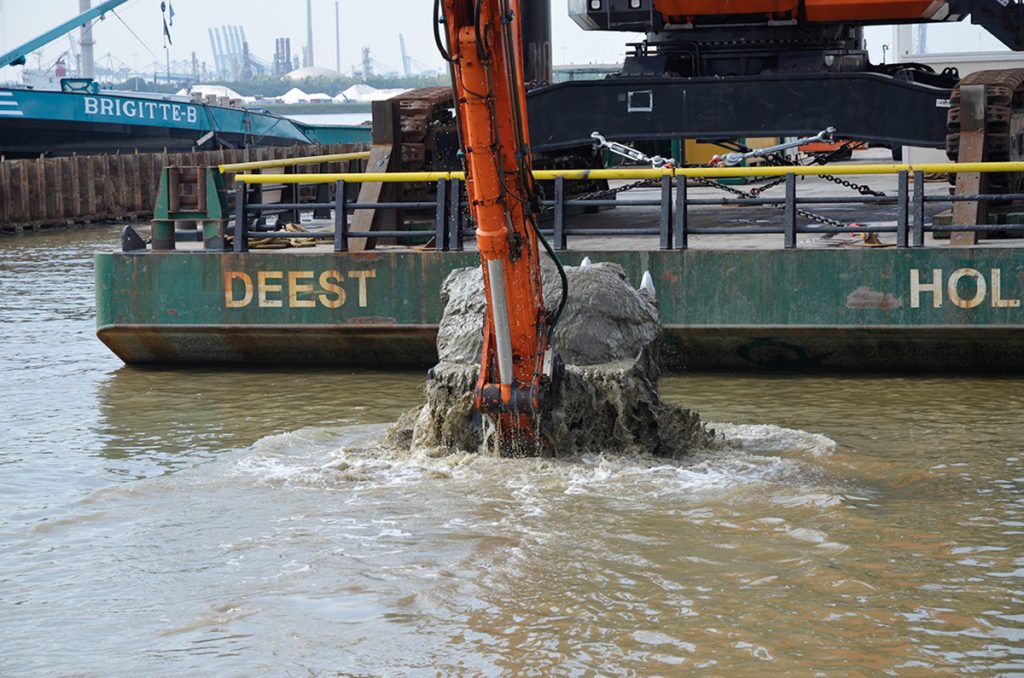
Digging down to a much shallower depth than Daddy Grizzly, the EX1200, which is equally spectacular to see up close, averages 7,000 tonnes for the two eight-hour shifts.
The is no summer holiday for the two Hitachi excavators, which are on target to complete the job by October. Trucked to the site using seven vehicles (heaviest 110t base machine), the EX1200 will eventually move on to another job.
11 TRUCKS TO MOVE THE EX1900
The EX1900, however, will remain in Antwerp until another job is found for it. It costs a small fortune to dismantle and truck an excavator of this size. Each track unit is a separate load, and each of the two rear counterweights travels separately. All told, 11 trucks are required to shift this excavator.
The preference is to keep it in Antwerp and float it to its next job, and we are informed that this EX1900 will remain in Europe. Unlike the Middle East-based machine, there is a very good chance we will see and read a lot more about the European one it in the future.


